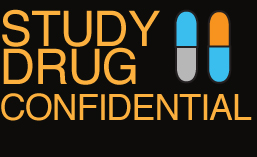New drugs are not tested on healthy populations for efficacy. The drug regulation systems in Canada and the US are designed for treating disease, not for enhancement.
Health Canada, the body responsible for drug regulation in Canada, bases its risk assessments on patients with an illness. Restoring a patient to full, functioning health constitutes a great benefit. Enhancing an already healthy patient constitutes a reduced benefit (they were fine, to begin with). Simply put, risk is related to potential benefit. If the potential benefit is large, how much risk one might accept goes up, too.
An analogy lies in cosmetic surgery – a rhinoplasty (nose job) can make a patient’s nose more symmetrical and aesthetically pleasing, but if it were excessively dangerous (if there was a good chance you would lose your nose, entirely) few would opt for surgery – the risk would be too great for the potential benefit. For a patient with a broken nose who cannot breathe at all, the same procedure might be entirely acceptable.
Health Canada assesses new drugs under three criteria – safety, efficacy, and quality – but efficacy is adjudicated for in people with a disease/disorder.
- Clinical efficacy, in this context, means that a drug reliably does what it purports to do on a select patient group.
- Safety refers to the present side-effects within the prescribed patient population.
- Quality refers mainly to the ability to manufacture the drug in question in a consistent manner.
Where a drug does not meet regulatory approval, that information is not posted, contributing to the impression that all drugs on the market must be safe. Health Canada was heavily criticized in a 2011 report on drug regulation for not meeting many of its own standards for transparent and public communication.
Even though these drugs have been used to treat ADHD since the early 1960’s, they are not without risk.
Official drug monographs from drug companies are available online to anyone who seeks them out. They clearly state that Adderall XR can cause sudden death in people with serious heart problems or structural cardiac abnormalities.
Further, the drug is contraindicated (not recommended) if a patient has hyperthyroidism, glaucoma, “agitated states” (psychosis/mania/bipolar disorder), issues taking amines, or any history of drug abuse. In fact, the drug monograph cautions further:
“Amphetamines have been extensively abused (see WARNINGS). Tolerance, extreme psychological dependence, and severe social disability have occurred.”
Amongst adults in a large and placebo-controlled (one group given sugar pills) study, here highlighted are the most dramatic side-effects, listed in order of greatest difference from placebo:
| Condition | Adderall XR% | Placebo |
| Dry Mouth | 35% | 5% |
| Loss of appetite | 33% | 3% |
| Insomnia | 27% | 13% |
| Headache | 26% | 13% |
| Weight loss | 11% | 0% |
| Dizziness | 7% | 0% |
| Diarrhea | 6% | 0% |
| Urinary tract infection | 5% | 0% |
| Constipation | 4% | 0% |
| Libido decreased | 4% | 0% |
| Heart palpitations | 4% | 0% |
In addition to these common side-effects, there are less common and horrific side-effects, including “toxic epidermal necrolysis” or the detachment of your top layer of skin from those beneath.
Here are the individual experiences of students using the drugs off-label, without a prescription, without the oversight of a physician:
If patients have a family history of substance abuse, physicians can still prescribe these drugs, but, as the drug monograph cautions, patients should be closely monitored to guard against developing abuse. For non-diagnosed students who seek drugs from a physician, that monitoring may not be happening. In 2009, 26.8% of Quebecers over age 15 had no regular physician – the highest percentage in the country and a number which has only increased over the previous 8 years. The following are student perspectives on addiction and guarding against it:
